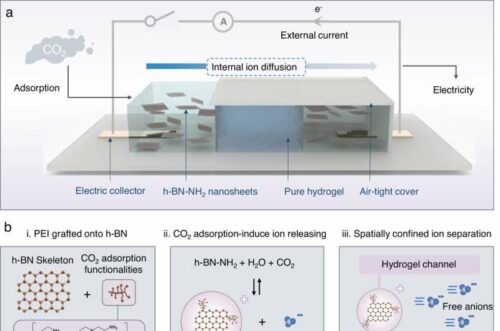With potential applications ranging from mobile devices to industrial energy systems, this initiative marks a significant step towards a more sustainable future.

Researchers at the University of Queensland, led by Dr. Zhuyuan Wang from the Dow Center for Sustainable Engineering Innovation, have developed a carbon-negative generator that utilizes carbon dioxide (CO2) to produce electricity. This small, proof-of-concept nanogenerator is crafted from a polyamine gel—common in industrial CO2 absorption—and a boron nitrate skeleton, which is merely a few atoms thick. This combination generates positive and negative ions, with the disparity in their sizes creating a diffusion current that can be converted into usable electricity.
The team explained that the generator operates on a principle where the movement of ions, rather than electrons, facilitates a more efficient energy conversion, akin to natural processes in the human body. The components of the generator are embedded within a hydrogel, primarily consisting of water, and shaped into disks and rectangles for testing in a CO2-rich environment. Upon observing electrical output, they validated the findings, underscoring the potential of this technology to significantly impact energy generation and carbon capture.
The initial tests showed that the technology could harness about 1% of the energy inherently carried by CO2 gas, with plans to enhance efficiency and reduce costs in future developments. They highlighted the nanogenerator’s potential applications, including personal devices that could utilize atmospheric CO2 to power mobile phones or laptops. Another ambitious application involves scaling up the technology to integrate with industrial CO2 capture processes to generate electricity.
The ongoing development of this nanogenerator is part of the broader GETCO2 initiative, spearheaded by the ARC Center of Excellence for Green Electrochemical Transformation of Carbon Dioxide, directed by Professor Zhang at UQ’s School of Chemical Engineering. This initiative aims to transform the perception and utility of CO2, viewing it not just as an environmental challenge but as a valuable resource for sustainable energy solutions.






